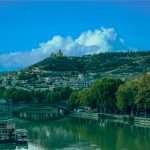The Dead Sea sits at the bottom of the Jordan Rift Valley, shimmering like liquid metal under desert sun. Its shoreline lies about 1,410 feet (430 meters) below global sea level, making it Earth’s lowest exposed land. Because it has no outlet and an intense evaporation rate, minerals concentrate here—so much that you float without trying.
The Dead Sea Quiz is a quick, classroom-friendly test of facts about this hypersaline lake on the Israel/West Bank–Jordan border. It covers location, chemistry, safety, and environmental change. Expect figures like ~34% salinity (about 10× ocean water) and a shoreline ~1,410 ft (430 m) below sea level—plus smart context to learn as you go.
The Dead Sea Quiz: 18 Questions (Multiple Choice)
Ready? Answer each multiple-choice question. Pick the best option. Explanations unlock instantly. Difficulty is noted after each question.
Environmental Change, Safety & Sources for Further Study
Change: As of 2025, the Dead Sea’s surface area and level vary year to year, but the long-term trend since the late 20th century has been downward. Causes include upstream water use in the Jordan basin and a naturally high evaporation rate under hot, dry conditions. Where shorelines retreat, fresh groundwater can flush through buried salt, dissolving it and creating sinkholes that threaten roads and farms.
Safety & respect: Always enter gently, keep your face above water, and avoid shaving or open cuts before floating. Ten to twenty minutes is enough for most people. Rinse thoroughly with fresh water afterward. Protected areas such as Ein Gedi are both ecological refuges and cultural treasures—follow local guidance. For technical background on levels and geology, consult the GSI’s Dead Sea research pages, and for satellite-observed change, see the NASA Earth Observatory timeline.
Why Levels Drop
Reduced inflow from the Jordan and tributaries, industrial mineral extraction, and multi-decadal drought patterns all contribute. Because the basin has no outlet, net water balance is simple physics: inflow minus evaporation. When inflow declines and evaporation stays high, the lake shrinks, exposing salt flats and triggering geochemical changes alongshore.
Safety & Etiquette in the Water
Float on your back, never your belly; keep your head up; avoid splashing. Bring water shoes—salt crystals can be sharp. If brine reaches eyes, exit calmly and use the freshwater showers on site. Respect reserves and posted warnings, especially near unstable shorelines or sinkhole zones.
FAQ
Is the Dead Sea actually a “sea”?
It’s a lake. The “sea” name is historical. Scientifically it’s a hypersaline, endorheic lake with no natural outlet, hence the high salinity and density.
Can fish live in the Dead Sea?
Not typical fish. The brine is too salty for most multicellular life, but specialized microbes (halophiles) and occasional algae blooms can occur in diluted zones after rare floods.
What should I do if Dead Sea water gets into my eyes?
Exit slowly and rinse with fresh water immediately. Do not rub your eyes; use the showers on shore. Seek help if severe irritation persists.
What Did We Learn Today?
- The Dead Sea’s shores sit ~1,410 ft (430 m) below global sea level—Earth’s lowest exposed land.
- It’s endorheic: inflow without outflow plus strong evaporation drives salinity to ~34–35%.
- Buoyancy is high because density is ~1.24 kg/L—floating is effortless but splashes sting.
- Retreating shorelines can spawn sinkholes when groundwater dissolves buried salt.
- Ein Gedi, the Lisan Peninsula, and the Dead Sea Transform are key places and processes to know.





